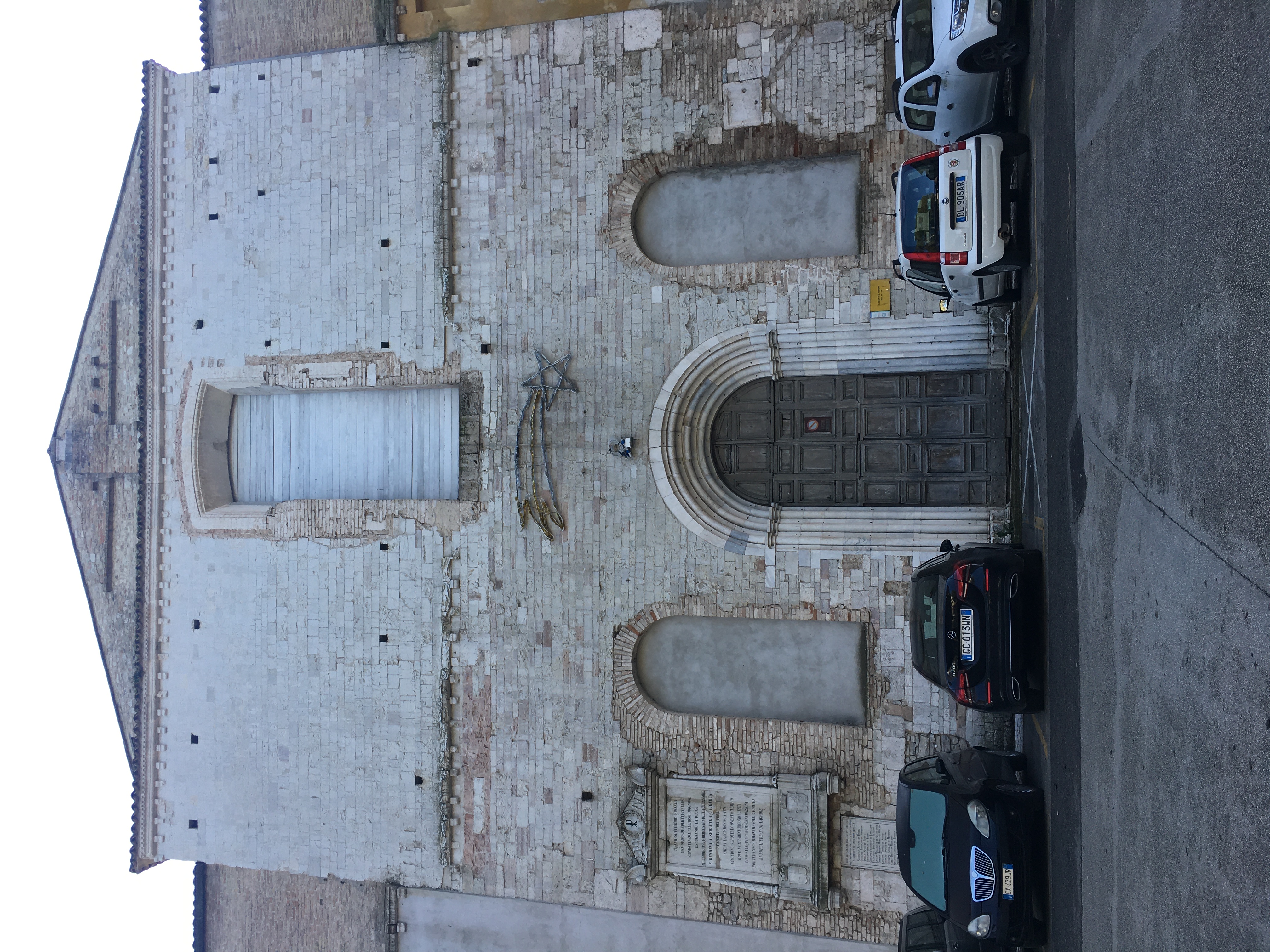Santi Simone E Giuda, Spoleto on:
[Wikipedia]
[Google]
[Amazon]
 Santi Simone e Giuda is a
Santi Simone e Giuda is a
 The
The Comune of Spoleto
entry on church, quoting L’Umbria, Manuali per il territorio, Spoleto, Roma 1978.
 Santi Simone e Giuda is a
Santi Simone e Giuda is a Gothic
Gothic or Gothics may refer to:
People and languages
*Goths or Gothic people, the ethnonym of a group of East Germanic tribes
**Gothic language, an extinct East Germanic language spoken by the Goths
**Crimean Gothic, the Gothic language spoken b ...
- romanesque-style, deconsecrated Roman Catholic
Roman or Romans most often refers to:
*Rome, the capital city of Italy
*Ancient Rome, Roman civilization from 8th century BC to 5th century AD
*Roman people, the people of ancient Rome
*'' Epistle to the Romans'', shortened to ''Romans'', a lette ...
church located on Via Brignoni #40 in Spoleto
Spoleto (, also , , ; la, Spoletum) is an ancient city in the Italian province of Perugia in east-central Umbria on a foothill of the Apennines. It is S. of Trevi, N. of Terni, SE of Perugia; SE of Florence; and N of Rome.
History
Spolet ...
, Province of Perugia
The Province of Perugia ( it, Provincia di Perugia) is the larger of the two provinces in the Umbria region of Italy, comprising two-thirds of both the area and population of the region. Its capital is the city of Perugia. The province covered al ...
, Umbria, Italy. It was built in the 13th century as a Franciscan church and adjacent convent.
History and description
 The
The Franciscan order
, image = FrancescoCoA PioM.svg
, image_size = 200px
, caption = A cross, Christ's arm and Saint Francis's arm, a universal symbol of the Franciscans
, abbreviation = OFM
, predecessor =
, ...
had grown in popularity since the death of St Francis in 1226. Simone, a young man from a prominent family from the hamlet of Collazone near Todi
Todi () is a town and ''comune'' (municipality) of the province of Perugia (region of Umbria) in central Italy. It is perched on a tall two-crested hill overlooking the east bank of the river Tiber, commanding distant views in every direction.
I ...
, like St Francis before him, forsook his family's position and prestige to join the follower of St Francis. Simone was sent to proselytize in Germany and then to become Provincial Minister of the order in the Marches and later Umbria, under the guidance of Elias of Cortona (c.1183-1253), who was one of the Saint's original band of friars and after 1221 vicar general of the order of Friars Minor
The Order of Friars Minor (also called the Franciscans, the Franciscan Order, or the Seraphic Order; postnominal abbreviation OFM) is a mendicant Catholic religious order, founded in 1209 by Francis of Assisi. The order adheres to the teachin ...
. Upon Simone's death in 1250, attributions of sanctity began to circulate. The Franciscans had by 1255 then achieved the canonization of at least four saints: Francis himself, Clare of Assisi
Clare of Assisi (born Chiara Offreduccio and sometimes spelled Clara, Clair, Claire, Sinclair; 16 July 1194 – 11 August 1253) was an Italian saint and one of the first followers of Francis of Assisi. She founded the Order of Poor Ladie ...
, Elizabeth of Hungary, and Antony of Padua; the community of Spoleto who owned Simone's relics expected a similar elevation for him and begun construction of a larger church at this site in 1254 to house his relics, although dedicating the Church, transiently they thought, to the saints and apostles Simon and Jude (''Simone e Giuda''). But alas, despite the centuries, Simone da Collazone has never achieved sainthood, and thus the church remained dedicated to St Simon the Apostle. Simone's relics initially moved in the 19th-century to the Duomo, now reside in Sant'Ansano.
The structures were completed in 1280 under the guidance of Fra Filippo da Campello, and have undergone many restorations and losses over the centuries. The plain white-stone facade remains unfinished and the windows were walled. A plaque on the right side recalls the 17 September 1860 battle for Spoleto between the victorious Savoyard forces led by General Filippo Brignone used artillery to force the surrender, within a day, of the multinational Papal army of Irish, Austrian, Franco-Belgians, Swiss-Germans and Italians, led by the Irish brigade leader Major Myles O’Reilly and occupying the adjacent Rocca Albornoziana
Rocca may refer to:
* Rocca (surname)
* Rocca (fortification), a fortifiable stronghold
*Rocca (crater), a lunar crater
*Rocca (French rapper) (born 1975), French–Colombian rapper
Places
;Municipalities ('' comuni'') of Italy
* Rocca Canaves ...
.
The monastic building was converted into barracks in 1863. The 16th-century frescoes depicting the Life of St Antony of Padua in the cloister are nearly completely covered over. In 1893, the buildings became an orphanage. The interiors preserve little of the original decoration.entry on church, quoting L’Umbria, Manuali per il territorio, Spoleto, Roma 1978.
References
{{DEFAULTSORT:Simone e Giuda Spoleto Churches in Spoleto Gothic architecture in Umbria Romanesque architecture in Spoleto 13th-century Roman Catholic church buildings in Italy Churches completed in 1280